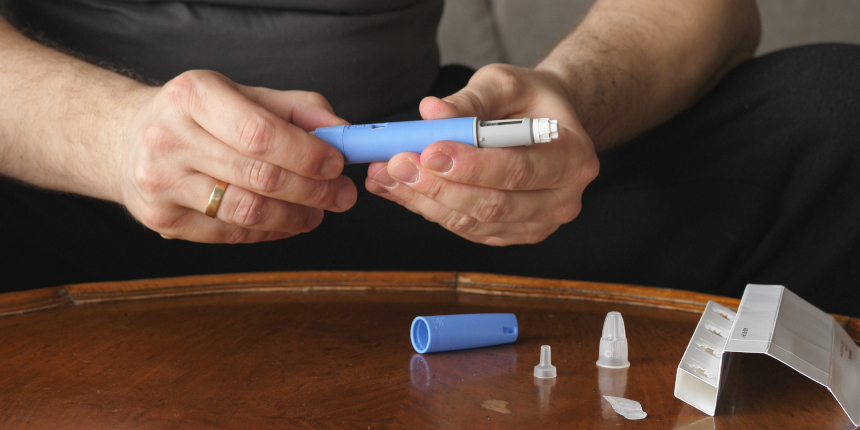
Diabetes – with the right therapy to a carefree life
Last Updated on 8. June 2023 by eschalch
Drug treatment of diabetics: differences in therapy for type I and type II diabetics, different types of insulin, different drugs for type II diabetics.
At its current level, insulin therapy gives diabetics a great deal of security and independence. It requires a trusting cooperation between doctor and patient and is based on a correct “setting”, of the patient, i.e. the determination of the exact daily insulin amounts required by the body.
Therapy of the Type I diabetes
Type I diabetes is a so-called autoimmune disease. In this process, the body’s own defense system, the immune system, reacts self-destructively against the pancreas’s own insulin-producing B cells. Type 1 diabetes is more commonly diagnosed in children and young adults, but can occur at any age. The cure is not possible.
Since people with type l diabetes already have an absolute insulin deficiency at the time of diagnosis, they are dependent on external insulin supply from the very beginning. Although insulin in Switzerland today is identical or very similar to insulin from the human pancreas, there is a difference between the body’s own insulin and injected insulin: it enters the blood in a different way. In the bodies of people without diabetes, the insulin-producing cells of the pancreas measure blood glucose and then release appropriate amounts of insulin directly into the blood. The insulin released acts in the blood for only a few minutes. If more insulin is needed, the pancreas makes more insulin available. The insulin requirement of the body is thus covered quickly and perfectly. People with type l diabetes, on the other hand, have to inject their insulin under the skin. From there, it is continuously absorbed into the blood. This process takes some time. The injected insulin is absorbed into the blood – regardless of the respective blood glucose level – until it is used up. For this reason, it is also not so easy to always set the blood sugar correctly.
Successful treatment for type I diabetes includes the right amount of insulin, a healthy diet, regular blood glucose self-monitoring, and paying attention to one’s own blood glucose history under everyday conditions. It requires the active cooperation of the patient and a high degree of responsibility and self-control. Treatment must be administered consistently throughout life so that blood glucose levels remain normal.
Basic features of insulin therapy
There are different types of insulin with different modes of action that diabetics can choose according to their needs and preferences:
- Short-acting insulin (also called “meal insulin” or “bolus insulin”) with rapid action but short duration of action. This insulin is used with meals.
- Long-acting insulin (also called “long-acting ” or “basic” insulin) with delayed action but longer duration of action. This insulin is used for the times between meals and for resting, for example at night.
- Mixed insulins: make it possible to reduce the number of injections, because they contain both a proportion of short-acting and a proportion of long-acting insulin. They are injected 1-2 times a day (before a meal).
- Human insulins: Human insulin is insulin that corresponds in structure and composition to human insulin produced by the pancreas in healthy humans. Human insulin is produced either semisynthetically (porcine insulin) or biotechnologically (using yeast cells). It can be used as short-acting or long-acting insulin. There are also combination products containing a mixture of short- and long-acting human insulin.
Each insulin has its advantages and disadvantages – it requires skill and experience to combine the different insulins in such a way that well-being is possible without restriction.
Therapy of the Type II diabetes
Type II diabetes is far more common than type I diabetes. Often the patient is overweight, suffers from elevated blood pressure or elevated blood lipid levels. This accumulation of metabolic disorders is also called the “metabolic syndrome” in medicine.
In people with type 2 diabetes mellitus, the pancreas does not produce enough insulin or the body can no longer use it effectively to convert sugar in the blood into energy due to insulin resistance. Excess weight, especially abdominal fat, promotes insulin resistance.
The treatment of type 2 diabetes mellitus consists primarily of a balanced diet and weight reduction – supported by regular physical activity. If the elevated blood glucose levels do not normalize with these measures, tablets and, if necessary, injection therapies are used.
The number of antidiabetic drugs has increased significantly in recent years and there are a large number of products available in Switzerland. The groups of active ingredients are listed alphabetically below:
DPP-4 inhibitors
They lower blood glucose levels by protecting the intestinal hormone GLP-1 from being broken down. GLP-1 is a natural hormone that, among other things, promotes the secretion of insulin.
GLP-1 receptor agonists
They behave like natural GLP-1 and bind to the GLP-1 receptor. Thus, depending on blood glucose, they promote insulin secretion from the beta cells of the pancreas and inhibit glucagon release. They also slow down gastric emptying and increase the feeling of satiety.
Metformin
Metformin is often used as the first drug therapy when dietary changes, weight reduction and increased exercise have failed to improve blood glucose levels. The antidiabetic effect is achieved by inhibiting the formation of new glucose in the liver.
SGLT2 inhib itors SGLT2 inhibitors reduce the re-transport of glucose from the urine to the kidney, resulting in increased urinary excretion of glucose. This lowers blood sugar levels and promotes calorie loss. Their effect is independent of insulin.
Sulfonylureas
They increase the secretion of insulin by the cells of the pancreas and thus reduce blood sugar.
It is wrong to delay insulin treatment for type ll diabetes as long as possible or even to perceive it as a threat. Especially in older diabetics, the simultaneous use of tablets and insulin can also be useful, for example, tablets during the day, an insulin dose before going to sleep.
The more personal responsibility the patient assumes during treatment, the less he is restricted in his professional and private life. As a rule of thumb, he has two options:
- a simple treatment with little effort, or
- a more elaborate treatment with normal nutrition.

